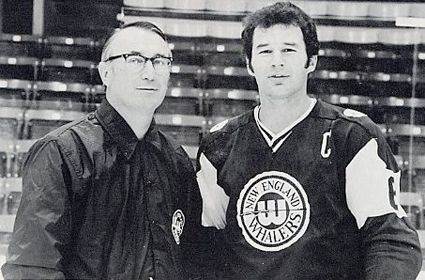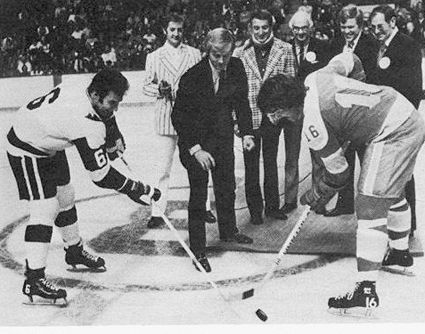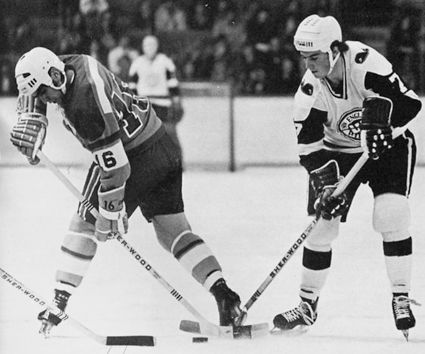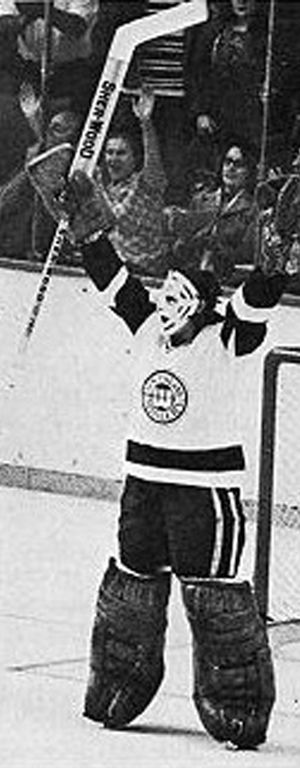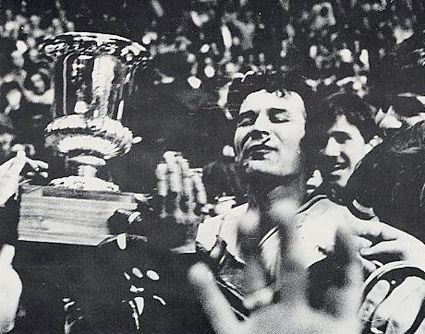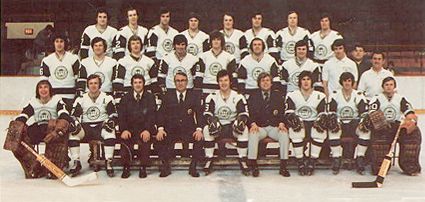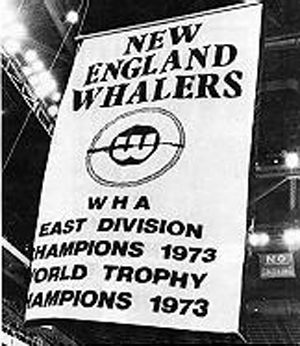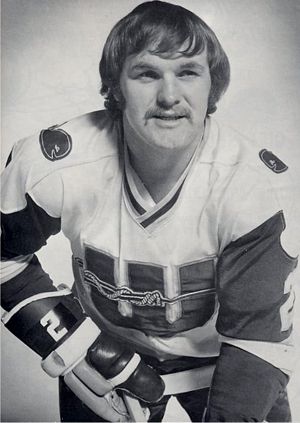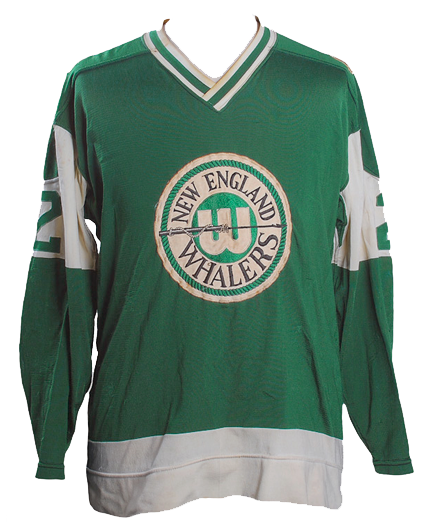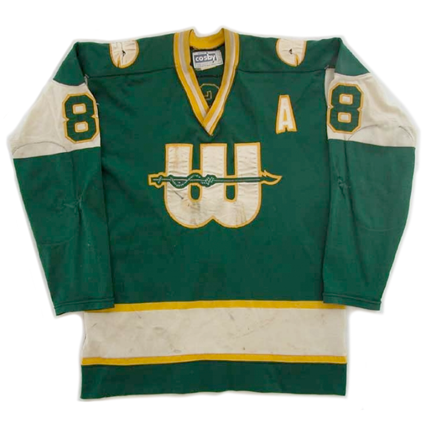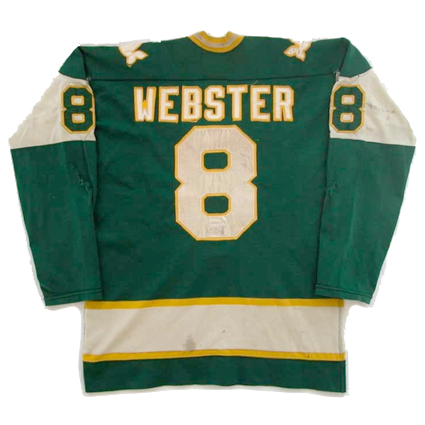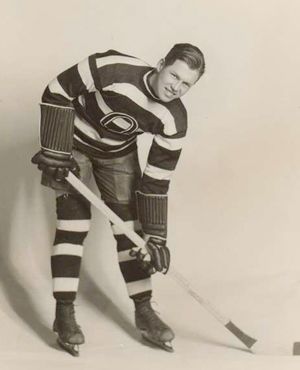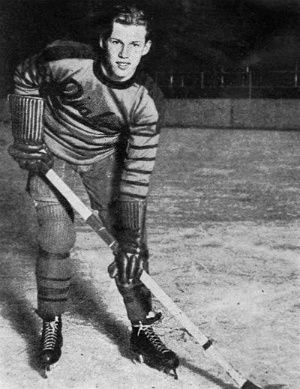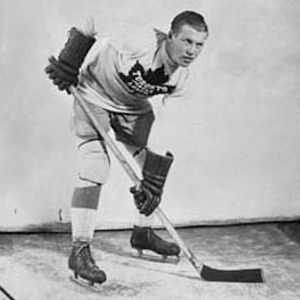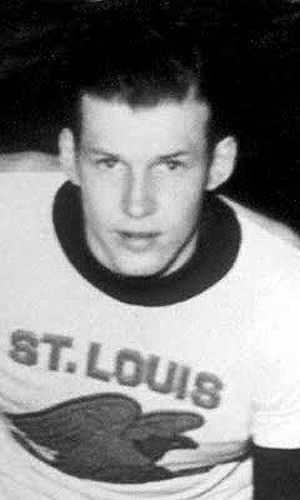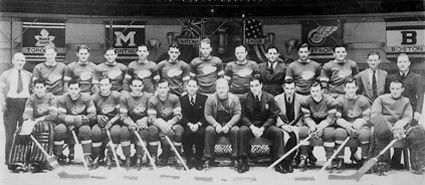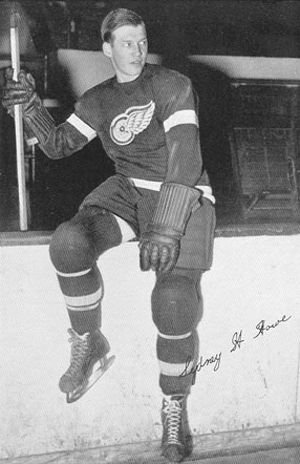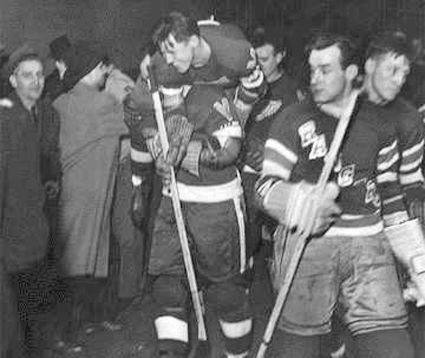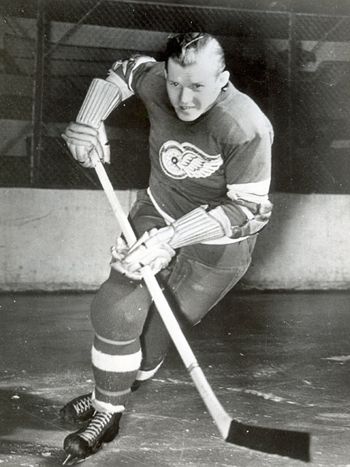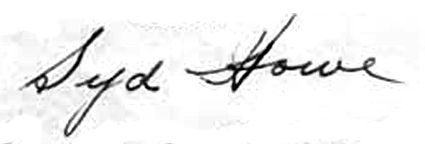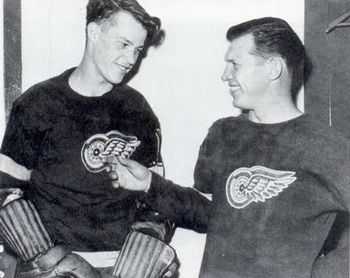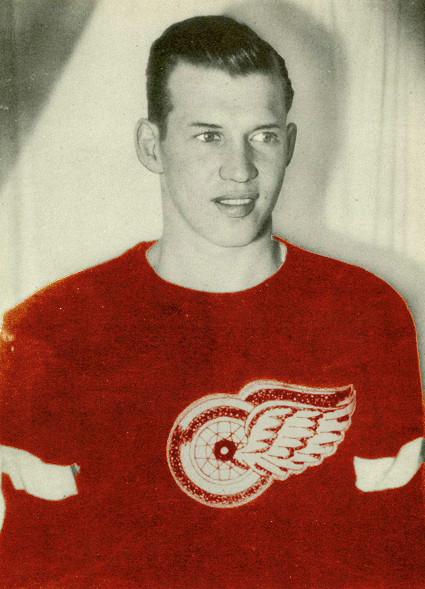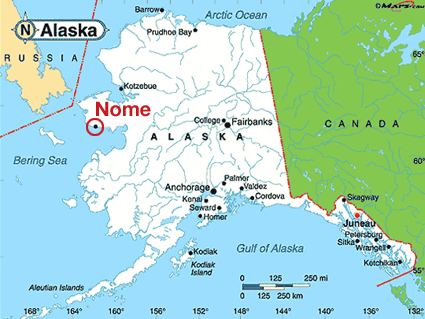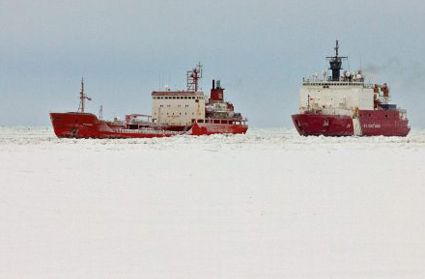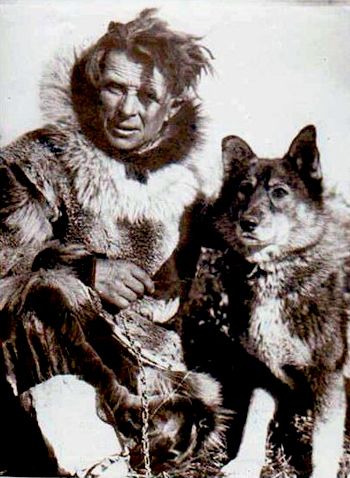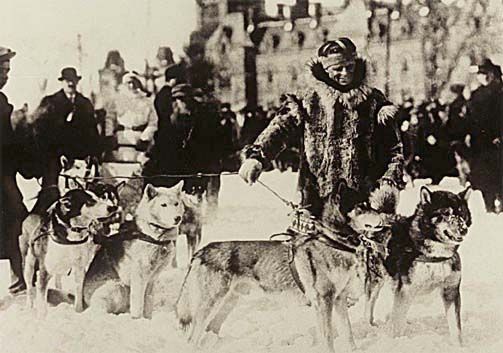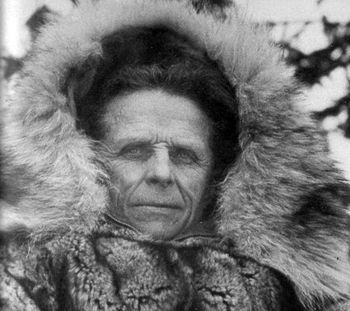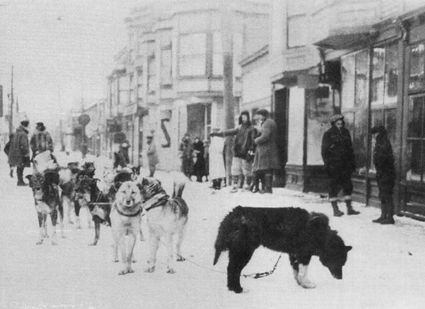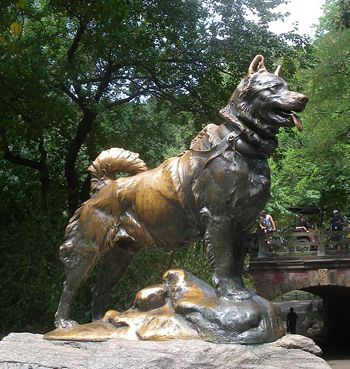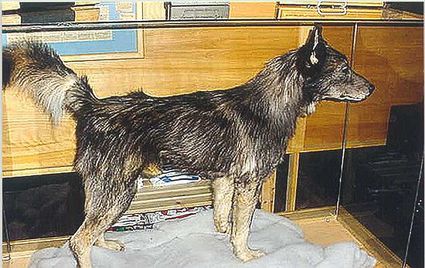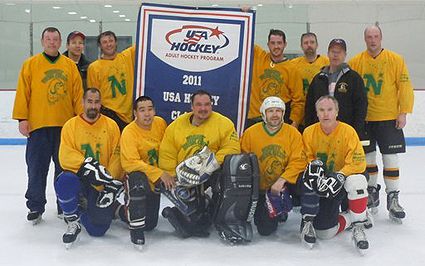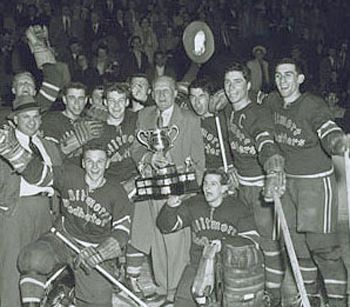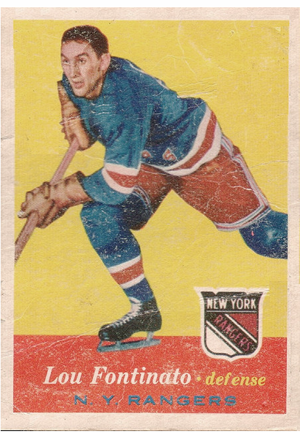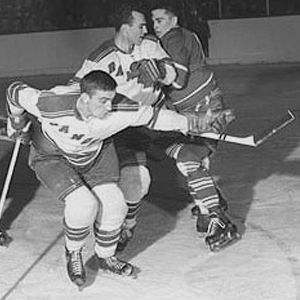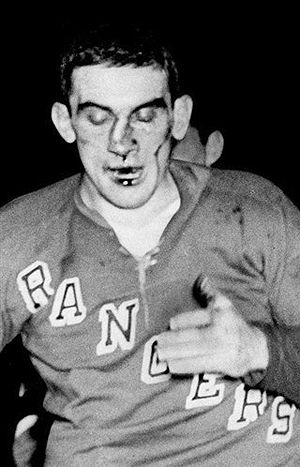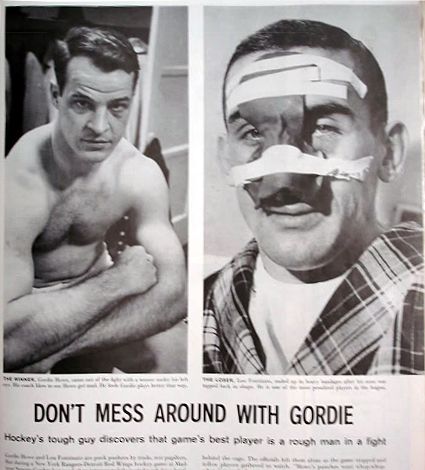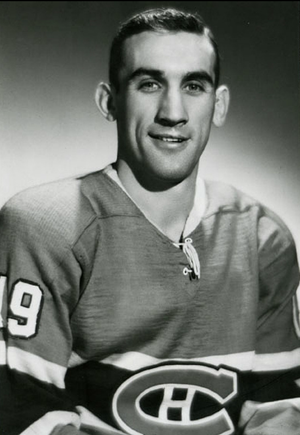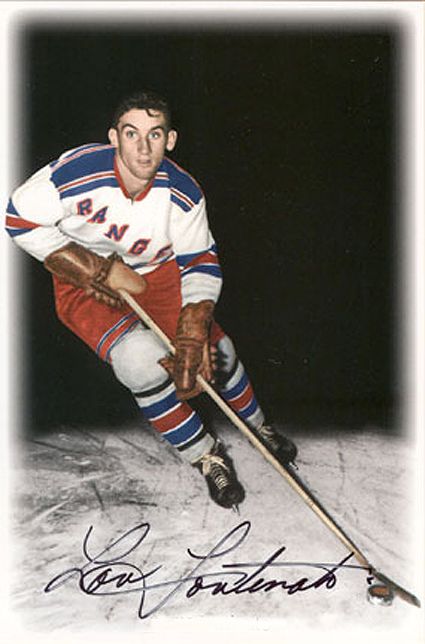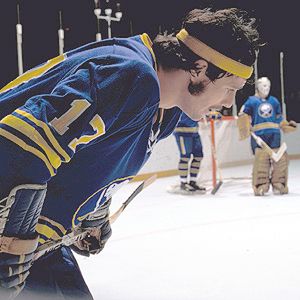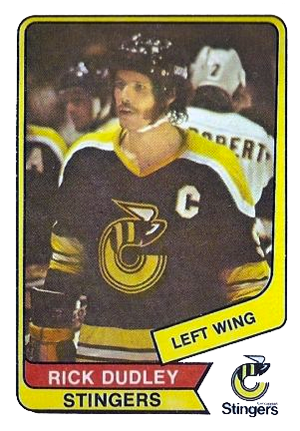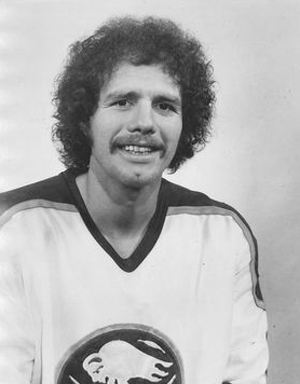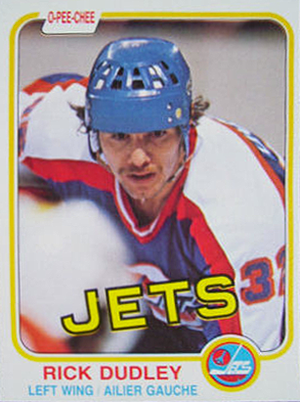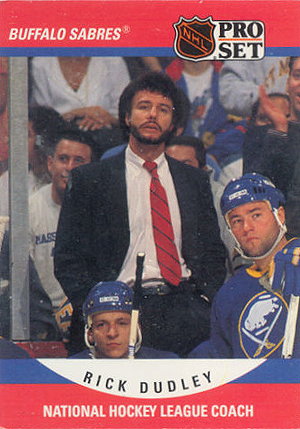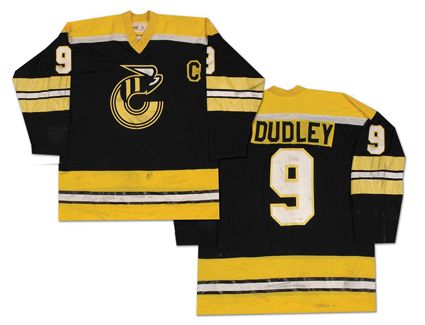Saturday, February 4, 2012
1972-73 New England Whalers Rick Ley Jersey
With the New England Patriots competing in tomorrow's Super Bowl, we thought we would take a look at another team named for New England, the New England Whalers of the World Hockey Association.
To stock their roster for the inaugural WHA season, the Whalers signed veteran Ted Green away from the Bruins to be the team's first captain.
Coach Jack Kelley and team captain Ted Green
They also lured 30 goal scorer Tom Webster away from the California Golden Seals, whose owner Charlie O. Finley refused to open the checkbook to keep several of his better players when the WHA came to raid his roster.
Rick Ley of the Toronto Maple Leafs was called upon to anchor the team's defense in front of former Pittsburgh Penguins and Detroit Red Wings goaltender Al Smith, who would eventually serve two terms with the Whalers.
The Whalers were forced to be creative in assembling the rest of their roster, as 12 WHA teams were seeking to employ roughly 250 professional players in all. Additionally, the NHL had also expanded by two clubs that season in an attempt to occupy markets the WHA might have found attractive, placing clubs on Long Island in New York and Atlanta, Georgia, meaning in actuality, 275 more players would be needed to stock an additional 14 combined rosters than the season before.
The tactic taken by the Whalers was to embrace the often overlooked American player, signing former US Olympic Hockey Team members, particularly those with ties to Boston. Larry Pleau (a Boston native) was lured away from the Montreal Canadiens, Kevin Ahearn, John Cunniff, Paul Hurley and Tim Sheehy, who all played for Boston College, and Tommy Williams, who had played for the Bruins were recruited to join the Whalers inaugural roster.
Larry Pleau scores the game winning goal against #00 Bernie Parent of Philadelphia during the Whalers first game
Jack Kelley, who had just won back to back national titles with Boston University in 1971 and 1972, was hired to coach the team. Additionally, Canadians John Danby and Ric Jordan, both of whom were members of Kelley's national championship winning Terriers, joined the Whalers along with their head coach.
The Whalers began play located in Boston, Massachusetts, dividing their home games between the Boston Arena and the Boston Garden, which was the traditional home of the Boston Bruins of the NHL since 1928. The Boston Arena, opened in 1910, is the oldest ice hockey arena still in use and was the Bruins original home and is still being used by the Northeastern Huskies of Hockey East, although it was renamed Matthews Arena in 1982.
The ceremonial opening faceoff between captain Ted Green and Philadelphia's Derek Sanderson at the Whalers first ever game. Note the Bruins logo prominent at center ice!
The inaugural Whalers season went better than anyone could have hoped for, as the Whalers won their first three games and nine of their first 13. They also posted a six game winning streak in early December to go ten games over .500 and finished the season strong with an eight game winning streak in early March, which included scoring seven goals in back to back games against Winnipeg and Minnesota. The team finished with a 46-30-2 record for 94 points, best in the league. At the conclusion of the season, Whalers forward Terry Caffery was named the league's Rookie of the Year following his 29 goal, 100 point season.
Terry Caffrey battles for the puck
In the playoffs, the Whalers defeated the Ottawa Nationals (who actually moved their playoff games to Toronto in advance of relocating there the next season, such was life in the rest of the WHA), then ousted the Cleveland Crusaders and then defeated the Winnipeg Jets (all by identical 4 games to 1 totals) to capture the Avco World Trophy as the WHA's inaugural champions.
In typical WHA fashion, fans in Boston not in attendance were unable to see the celebration, as the local TV station pulled the plug on the game with seven minutes remaining in order to begin broadcasting a tennis match! If that were not enough, the Avco World Trophy was not actually completed yet, and the team had to skate around the rink with their Eastern Conference Championship cup as a substitute!
Green celebrates with the substitute trophy following the Whalers victory
The club was led in scoring by Webster, who set career highs in goals, assists and points, with 53 goals, 50 assists and 103 points to place fourth in the WHA scoring race. Caffery's 100 points placed him second, while Pleau was next with his 39 goals and 87 points while Smith recorded 31 wins in goal.
The WHA champion 1972-73 New England Whalers
Immediately after winning the championship, the Whalers owner Howard Baldwin issued a challenge to the eventual NHL champion to meet in a one-game playoff on neutral ice for the rights to the Stanley Cup! (The sarcastic among you might suggest that winning the Stanley Cup would eliminate the need for the completion of the Avco World Trophy) Needless to say, the NHL did it's best to ignore or validate the upstart league and the game never came close to taking place.
The Whalers championship banner
The following season the Whalers again won the Eastern Division with a 43-31-4 record for 90 points, good for a second place tie in overall points.
Rick Ley in the Whalers second jerseys
Winger John French led the team in scoring with 72 points, while Webster led the team in goals in 43, fourth most in the league. Smith again reached the 30 win level in the nets for the Whalers.
The postseason did not go as planned, as the Whalers ran into a tough Chicago Cougars club, who had finish nine points back in the standings. The Whalers took Game 1 and 2 at home in Boston, but dropped the next two in Chicago. After Chicago took Game 5 in Boston, the Whalers avoided elimination with a 2-0 win back in Chicago to force a Game 7 back at home, only to fall short 3-2, bringing their season to an end.
By now, scheduling games in the Boston Garden had become increasingly difficult, as the Boston Celtics of the NBA were also in need of dates. Team ownership put a plan in place to relocate the club 100 miles west to Hartford, Connecticut, but the new Hartford Civic Center would not be ready for the start of the season, causing the Whalers to play in Springfield, Massachusetts at the Springfield Coliseum from October, 1974 until their debut in Hartford on January 11, 1975, brining to and end their time in Massachusetts.
The Whalers were 21-15-2 in their temporary home despite a schedule heavily loaded with road games, playing 25 out of their first 38 away from Springfield, including road trips of 6 and 7 consecutive games. The Whalers finished the season 43-30-5 to win their third consecutive Eastern Division title, at one point playing ten consecutive home games during a stretch of 17 out of 20 at their new home in Hartford.
The WHA lasted until the 1978-79 season, after which the Whalers and three other WHA clubs were allowed into the NHL as expansion clubs, not a merger of leagues. One of the conditions of the Whalers being granted entry into the NHL was they were forced to change their name from the New England Whalers to the Hartford Whalers at the demand of the very same Bruins they briefly shared a rink with.
Today's featured jersey is a 1972-73 New England Whalers Rick Ley jersey. This style of Whalers jersey was worn only for their inaugural, championship winning season in Boston. What made it distinctive was it's circular crest, trimmed with a rope pattern and containing the team name in the circle. A popular feature of the jersey was the secondary shoulder logo, Pucky the Whale. Ley's #2 is one of only three numbers ever retired by the Whalers.
Bonus Jersey: Today's bonus jersey is a 1974-75 New England Whalers Tom Webster jersey as worn during the team's second and final season in Boston. The Whalers simplified their crest to something more modern and graphic for their second season, taking the "W" from their original round logo with a simplified harpoon bisecting it. Pucky the Whale remained and the jerseys gained gold trim around the neck, numbers and now elevated waist stripe, which moved upwards off the bottom of the torso.
This sweater would remain unchanged even after the move to Hartford, until the 1976-77 season when the single, outlined waist stripe would change to a three stripe "Northwestern" pattern on the green road jerseys, while the home whites would take an additional season to follow suit.
Our video section today kicks off with an interview with Whalers captain Green. Nice helmet Ted. Or is that a bandage?
Next, a profile of Ley, longtime Whalers defenseman.
Finally, a look at Smith in goal. Rock on to the tunes while you enjoy the game footage.
Labels:
New England Whalers,
WHA
Friday, February 3, 2012
1935-36 Detroit Red Wings Syd Howe Jersey
Syd Howe began his NHL career with the Ottawa Senators in 1929, playing in 14 games that first season.
Howe with the Senators
He was unfortunate to be loaned to the ill-fated Philadelphia Quakers in his second season, as the franchise, which was in dire financial difficulties, had just relocated from Pittsburgh. The move to Philadelphia did nothing to solve the club's problems and they went 4-36-4 to set an NHL record for futility. In their 44 games, they scored just 76 goals, of which Howe had 9, or 12%.
Howe during his season with the Quakers
The Quakers folded after the season and Howe found himself with the Syracuse Stars of the IHL for the 1931-32 season as well as making three appearances for the Toronto Maple Leafs when Ottawa, who still held his rights, failed to field a team due to their financial struggles.
Howe during his brief time with the Maple Leafs
For the 1932-33 season, Howe was back with the Senators, with whom he set a new career high for goals and points, with 12 goals and 24 points. The following season he raised his goal total to 13 in what would prove to be the Senators final season in Ottawa after once being the dominant club in all of hockey, which included seven Stanley Cups.
Howe remained with the relocated franchise, now based in St. Louis and known as the Eagles. There, Howe edged his career best marks to 14 goals and 27 points in 36 games before being traded to the Detroit Red Wings, where he would play 14 additional games, scoring 8 goals and 20 points to push his final season marks to 22 goals and 47 points.
The St. Louis Eagles Syd Howe
The move to Detroit finally gave Howe's career some much needed stability, as he would remain with the Red Wings for 12 seasons. The move would also provide him with success, as during Howe's second season with Detroit in 1935-36, they would capture the first Stanley Cup of his career following a three game sweep of the Montreal Maroons (which included the longest game in NHL history, the six overtime Game 1) before defeating the Maple Leafs 3 games to 1. Detroit would repeat as champions in 1937, this time defeating the Montreal Canadiens and New York Rangers, both in the full five games.
The 1937 Stanley Cup Champion Detroit Red Wings
In the 1940-41 season, Howe would raise his career best goal total to 20, as well as adding another 24 assists for 44 points, only his second season over 40. He would equal his 20 goal mark two seasons later, while adding 35 assists for a new career best of 55 points as the Red Wings once again captured the Stanley Cup following a sweep in the finals over the Boston Bruins, the third of Howe's career.
Howe then set career best marks in goals and points, as he tallied 32 goals, his only season over 30, on his way to the only 60 point season of his career with exactly 60.
Three of Howe's goals that season came in a record setting game against the Rangers when he scored a hat trick during the final six minutes of a 15-0 Red Wings win over New York on January 23, 1944, which remains the largest margin of victory ever in an NHL game.
His goal total that season also included a stellar six goal performance on this date in 1944 in a 12-2 win over the very same Rangers. Howe scored a pair of goals in each of the three periods to become the first player to score six goals in a game since Cy Denneny scored six in 1921, a span of 23 years. In the nearly 70 years since, only two other players have matched his feat, Red Berenson in 1968 and Darryl Sittler in 1976, while no one has topped it.
Howe's six goals delighted the crowd of 12,293 at the Olympia Stadium, which included 900 school patrol boys, who cheered wildly at the end of the night as Howe was carried off the ice on the shoulders of his teammates. "They were going in the net tonight. Another night they don't," said Howe. "I don't remember any goal in particular. he boys were feeding them to me nicely." When asked how he was going to celebrate, he replied "No celebration for me. I'm due at work at 7:10 AM," as amazingly, Howe played for the Red Wings at night, but worked as a machinist for Ford during the day!
Howe being carried off the ice on the shoulders of his teammates following his six goal night. Note the "V" patches worn on the Red Wings arms during World War II.
The following season of 1944-45 saw him score 17 goal, more in line with his career average, but by setting a career high with assists with 36, he had his third 50 point season with 53.
His final season saw Howe splay 26 games for the Red Wings, scoring 4 goals and 11 points to put his final career totals at 237 goals and 291 assists for 528 points, making him the NHL career scoring leader at the time despite never having won the scoring title.
Howe also played 14 games for the Indianapolis Capitals of the AHL that season and finished out his playing days with a season in the Quebec Senior Hockey League, playing for a club named the Ottawa Senators, brining his career full circle, as he broke into the NHL in Ottawa with a club also named the Senators.
In 1965 Howe was inducted into the Hockey Hall of Fame.
Of note, Gordie Howe arrived in Detroit the year after Syd left the team, setting records for longevity while scoring at a high rate, giving fans in Detroit a Howe to cheer for from 1934 to 1971 - 37 seasons in all.
Gordie and Syd Howe
Today's featured jersey is a 1935-36 Detroit Red Wings Syd Howe jersey. from the season Howe won his first of three Stanley Cups with Detroit. When the NHL expanded to Detroit in 1926, the club was named the Cougars in honor of the Victoria Cougars, the PCHL club that supplied Detroit it's original roster when the PCHL folded.
In 1930 the club changed it's name to the Falcons for two seasons prior to being named the Red Wings in 1932 following a change in ownership to James Norris. The team adopted the winged wheel logo and their iconic red sweaters have remained essentially unchanged ever since. The original red numbers outlined in white lasted until 1937 when they changed to a more legible single color white.
Names were added by league rule in 1977, later becoming arched in 1982 following a one year change in the font for the numbers. 1983 saw a return to the standard block font for the numbers, along with raising the white waist stripe up a few inches from the hem to mirror the white jerseys, only to return to it's original location at the bottom of the jersey in 1986.
Today's video selection is a look back at the Detroit Olympia, the long time Red Wings home and site of Howe's six goal game.
Labels:
Detroit Red Wings,
Howe Syd
Thursday, February 2, 2012
2010-11 Nome Mighty Musk Oxen Jersey
Nome, Alaska was in the news recently when it was cut off from the world due to a massive storm last fall, which prevented the normal supply of fuel from reaching the remote town of 3,500 inhabitants.
Threatened with running out of fuel before it made it through the rest of the winter, it necessitated the U. S. Coast Guard icebreaker Healy to cut a path through 300 miles of sea ice up to 8 feet thick to enable the Russian tanker Renda to resupply Nome with fuel for it's snow plows, ambulances, fire trucks and police vehicles as well as heating 1,000 homes in a area where temperatures regularly drop to -40º F.
The Healy began it's journey on January 6th, sometimes gaining just a few miles a day, due to it being the only active ocean-going Coast Guard ice breaker in the Arctic as well as being classified as just medium in size. It arrived 10 days later on the 16th and then 1.3 million gallons of fuel had to be transferred through hoses across a half a mile of the ice covered harbor into Nome.
The Renda and the icebreaker Healy after their arrival at Nome
But this wasn't the first time Nome had been cut off from the rest of civilization and in need of supplies. Located just two degrees south of the Arctic Circle, Nome had been icebound since July of 1924 and reliable air travel would not yet be an option for the better part of ten years. The only rout for mail and needed supplies was via dog sled traveling along the Iditarod Trail, a 950 mile route which originated in Seward, Alaska and ran across several mountain ranges and the vast Alaska Interior before reaching Nome, a journey normally expected to take 25 days when delivering mail.
Shortly after the departure of the last ship of the season, a two-year old child in the nearby village of Holy Cross became the first person to display symptoms of diphtheria, which was first diagnosed as tonsillitis. Diphtheria is extremely contagious and can survive for weeks outside of the human body, and the child died the following morning. Another fatality occurred on December 28th followed by two more children dying. Finally, on January 20th, the first case of Diphtheria was diagnosed and the town's only doctor, Dr. Curtis Welch, had only expired diphtheria antitoxin from 1918 on hand. The boy died the next day.
The next day another child was diagnosed as being in the late stages of the disease. In an attempt to save her life, she was given the antitoxin, yet she died later the same day. Now realizing they had a serious situation on their hands, the town council was summoned by the Mayor George Maynard and a quarantine was enacted and on January 22nd Dr. Welch sent a telegram alerting the outside world an epidemic was about to break out and they were in need of the antitoxin.
Two more people died by the 24th and 20 more cases had been confirmed with 50 more at risk. In all, 10,000 people were under threat in northwest Alaska, and without the antitoxin, the death rate would be close to 100 percent.
A plan was put into place to have a pair of sled dog teams, one leaving from Nome led by Norwegian Leonhard Seppala, who had made the run to Nulato in a record setting four days and was a three time winner of the All-Alaska Sweepstakes sled dog race. Seppala's team was led by Togo, a dog as famous as his owner for his leadership, intelligence and ability to sense danger.
Leonhard Seppala and Togo
While not large enough, a supply of the antitoxin big enough to hold off the disease was located in Anchorage, which was delivered to Nenana from Anchorage by rail on January 27th while a larger supply would arrive in Seattle, Washington on January 31st.
A relay of the best drivers and teams was arranged to deliver the serum from Nenana across the interior to Nulato, where Seppala would be waiting to make the return trip to Nome, a full distance of 674 miles. Telephone calls and telegrams called back the drivers who were out on their various mail routes and assigned them to their positions along the route. "Wild Bill" Shannon was the first musher in charge of the 20 pound package, leaving the train station in Nenana at 9 PM on January 27th in temperatures of -50º F. Bear in mind, in Alaska during late December, the sun does not rise until 12 noon and sets at 4 PM, for just four hours of daylight each day.
Forced off the trail and onto the even colder river due to damage to the trail by horses, he arrived in Minto at 3 AM with his face black from frostbite and suffering from hypothermia with the temperature now at a staggering -62º. After a four hour rest, Shannon set out once again and arrived in Tolovana at 11 AM in bad shape to hand the serum over to Edgar Kallands, whose hands were reportedly frozen to the sled's handlebar when he arrived in Manley Hot Springs at 4 PM in -56º weather, needing warm water poured over his hands to free them.
From there, several native Athabascan's took their turns, Dan Green, Johnny Folger on January 28th and Sam Joseph, Titus Nikolai, Dan Corning, Harry Pitka, Bill McCarty and Edgar Nollner on January 29th before George Nollner delivered the antitoxin to Charlie Evans at Bishop Mountain at 3 AM on January 30th.
Meanwhile in Nome, the two new cases had been diagnosed on January 29th despite the quarantine due to the contagiousness of the disease. News of the crisis was now front page news in the lower 48 states from San Francisco to New York.
Evans braved the cold weather, and the loss of two of his dogs to frostbite, arriving at 10 AM. The next to take a turn was Tommy Patsy, who was followed by a man nicknamed "Jackscrew" and then Alaska Native Victor Anagick who in turn passed the package on to native Myles Gonangnan in Unalakleet along the shore of Norton Sound at 5 AM on January 31st. Gonangnan had to brave whiteout conditions and gale force wind chills of -70º to arrive in Shaktoolik at 3 PM, where Henry Ivanoff was waiting in case Seppala was not there.
The number of cases in Nome had risen to 27 and all hope now lied with the dogs and their heroic drivers.
Seppala and his team, led by Togo, had travelled 170 miles from the 27th to the 31st, leaving in -20º temperatures in Nome, only to arrive in Shaktoolik by taking a shortcut across the sound in temperatures of -30º and windchills of -85º thanks to an approaching storm.
Ivanoff and his team ran into a reindeer and were tangled up shortly after leaving Shaktoolik when Seppala, thinking he was still on his way to Nulato 100 miles away and unaware of the change in plans to hand over the serum to him in Shaktoolik, passed by Ivanoff, who shouted to him that he had the serum in hand.
Having reached Ungalik, and with the news of the epidemic having worsened, Seppala set out to cross the exposed open ice of the sound in the dark, braving the -85º windchill, arriving at Isaac's Point on the other side of the sound at 8 PM, having traveled 84 miles that day. After resting, he and his team once again set out at 2 AM into the full power of the storm with temperatures of -40º and winds of 65 mph. They crossed the 5,000 foot elevation of Little McKinley Mountain and arrived in Golovin on February 1st at 3 PM.
Leonhard Seppala
The serum was then passed on to Charlie Olsen, who was blown off the trail and suffered frostbite putting blankets on his dogs in windchills of -70º. He arrived in Bluff at 7 PM on that night in rough shape to hand off to Gunnar Kaasen, who waited three hours for the storm to break, only to find it getting worse and left into a headwind at 10 PM before drifts blocked the trail.
He travelled through the night through drifts and over the 600 foot Topkok Mountain in visibility so bad he sometimes could not see his dogs! He actually overshot Solomon by two miles and decided to keep going, at one point having his sled tipped over by the winds, which caused the cylinder with the serum to become buried in the snow. Kaasen then suffered a case of frostbite of his own when he had to use his bare hands to free the stuck cylinder.
He eventually reached Point Safety at 3 AM actually ahead of schedule only to find the next driver asleep and with his team unprepared. With his lead dog Balto and the rest of the team performing well, Kassen chose to keep on going for the final 25 miles to Nome, arriving on this date in 1925 at 5:30 AM with his cargo intact, without a single vial of the serum broken.
Balto and the team that delivered lifesaving serum to Nome
The antitoxin was thawed out by noon and ready for treatment to begin after the dog teams had travelled 674 miles in 127 1/2 hours in extremely cold temperatures in near-blizzard conditions and gale force winds in what would become known as "The Great Serum Race" or "The Great Race of Mercy".
A map of the route of the serum, with the dog sled route in red with Seppala's leg from Shaktoolik to Golovin highlighted. Note how it crosses the sound at one point, shaving a day off the trip.
The epidemic was now under control and the next shipment arrived by sea on February 7th with a third traveling again by dog sled on the 15th.
All the participants of the first dog sled relay received letters of commendation from President Calvin Coolidge, gold medals and $25 from the territory of Alaska.
Kassen and his dogs became celebrities, touring the west coast of the United States for a year, including starring in a movie about the relay. A statue of his dog Balto was placed in Central Park in New York City in December of that year, while the real Balto and team became part of a sideshow until being rescued and given a permanent home at the Cleveland Zoo, where Balto lived until 1933 before being mounted and put on display at the Cleveland Museum of Natural History.
The statue of Balto in Central Park
History now recognizes Seppala and Togo as the true heroes of the relay, as they covered the longest distance and most hazardous conditions, making a round trip of 261 miles, forwarding the serum 91 miles, almost double the distance of any other team. Seppala and Togo also went on tour across America, including 10 days at Madison Square Garden in New York. Togo lived until 1929 and is now on display at the Iditarod Museum in Wasilla, Alaska.
Togo at the Iditarod Trail Museum
The extreme weather conditions this winter, with temperatures in Nome reaching -40º, were reported to have cracked hotel pipes and even reduced the turnout at the Mighty Musk Oxen's pickup hockey games.
From USAHockey.com:
Mighty Muskox thrive in the elements of northern AlaskaWhen the Mighty Muskox first played in USA Hockey’s Adult Classic in 2009 in Anchorage, Alaska, it marked the first time the team had played hockey indoors.
“It was like a kid in a candy store,” said captain Mitch Erickson. “The lighting was great. The ice was perfect. The corners were smooth. I play goal and if a shot was above the boards, I could see it.
“The rink also was bigger and was a whole lot warmer. We actually rented ice time before the tournament just to get used to it.”
The Muskox — named after the Artic animal that is considered to be a descendant of the woolly mammoth — made their third trip to the tournament earlier this year and captured the Bronze (30-plus) Division championship.“We had two teams, one in the Adult Bronze that won and another in the Novice Division that bombed out,” Erickson said. “The majority of us are in our 40s and 50s. We have two players in their 30s, so that’s where we have to play. There were a lot of greybeards out there. I’m sure they would have qualified for an over-40 team, too.”
The Mighty Muskox’s enthusiasm for playing indoors stems from their unique home base.“We’re located approximately 550 miles northwest of Anchorage just below the Arctic Circle near the Bearing Sea with no access to roads,” Erickson said. “One of our players, Ken Hughes, rode his snowmobile 75 miles one way just to play.
“He moved to Nome last year but for a number of years he rode his snowmobile. We call him Kenny ‘Hockey’ Hughes.”
The Mighty Muskox built their own rink — outdoors — and they feel it’s North America’s westernmost hockey rink, indoor or outdoor.
“We were the only team that won [at the 2011 Adult Classic] that plays on outside ice,” Erickson said. “We have trouble playing indoors because we usually warm up shoveling snow and scraping the ice.
“We don’t have a Zamboni, but we have our own homemade mop system, which is more of a spray bar hooked to a garden hose, and we drag it.
“After we built the rink, we maintain it with volunteer labor and equipment,” continued Erickson. “A guy named Charlie Painter is a key volunteer who keeps the rink up and running.”
Obviously, Nome will never be confused with Miami when it comes to weather. And, understandably, that’s a story all by itself.
“We had to use heavy equipment … a big 966 front-end loader and caterpillar with a bucket on it — 31 times last year to clean the snow off the ice,” Erickson said. “That was a record. But it’s become par for the course the last few years. If we get a good snowstorm, it will fill the rink to the top of the boards.
“But, usually within 24 hours, we’re ready to play again.”
There’s also the matter of temperature — which is another way of saying the Mighty Muskox don’t play in “balmy” weather.
“It could be 10 above with 25 mile-per-hour winds, which equates to 45 below,” Erickson explained. “A lot of us will be out there when it’s 20 below zero. We also have an informal club that plays at 30 below. I’ve never played in 30 below, but I have played when it’s been 29 below.”
If that sounds like standard procedure in Alaska, think again.
“When we go to Anchorage we’re asked ‘You guys actually play outside, in the wind and the cold?’” Erickson said. “They think we’re whacked out.
“Our town’s population is about 3,500 and we only have 10 miles of roads in the winter. It takes a lot of motivation to leave a warm place in 20-below weather.”
The genesis of the Mighty Muskox occurred 10 years ago when the son of St. Cloud, Minn. natives Ron and Jane Brown accepted a teaching position in White Mountain, a small village about 65 miles East of Nome.
“There was an article in the Nome Nugget newspaper about Ron and Jane sending equipment to their son to start hockey there,” Erickson said. “Somehow, we connected with the Browns and they ‘adopted’ us.
“They’ve been great supporters of our program as has the Hockey Zone in St. Cloud. They’ve sent us used youth equipment and skates on several occasions. I also recall that St. Cloud Cathedral sent us equipment once, too.”
Once the rink was built, according to Erickson, more guys came in and they’ve played hockey ever since.
“We have everybody from beginners to a guy who had some pro experience,” Erickson said. “There are a few who were born in Minnesota and played youth and high school hockey there in the 70s. But most everyone else just picked it up, especially the local boys.”
What’s given Erickson a great deal of satisfaction is that the two youngest players, Banner Romensko and Daniel Stang, come back from college during their holiday break and play for the Mighty Muskox.
“That’s the best reward for all the time we’ve spent putting this rink together,” said Erickson.
“Next year we’re going to have a Novice 21 team because then these kids who are 21 can play with us. We’ll have 58-year-olds with 21-year-olds.”
Today's featured jersey is a 2010-11 Nome Mighty Musk Oxen jersey. Actually, we should say "jerseys", as half the team is wearing jerseys emblazoned with the old Minnesota North Stars "N" logo, recycled for "Nome", with the stars of the big dipper (as seen on the flag of Alaska) above, while the other half of the club has jerseys with "Mighty Musk Oxen" arched over an illustration of a Muskox!
Today's first video is a tribute to the Great Serum Run of 1925, which includes some film footage of those involved.
Next, an interview with the Executive Officer if the icebreaker Healy as it made it's way to Nome.
Wednesday, February 1, 2012
1958-59 New York Rangers Lou Fontinato Jersey
Lou Fontinato was a rugged defenseman who who played for the Guelph Biltmore Mad Hatters in junior hockey for two seasons, including a Memorial Cup championship in 1952.
The 1952 Memorial Cup champion Guelph Biltmore Mad Hatters
Following his junior career, Fontinato joined the Vancouver Canucks of the Western Hockey League in 1952-53. He would play for both the Canucks and the Saskatoon Quakers of the WHL in 1953-54 and then appear for Saskatoon, Vancouver and make his NHL debut with the New York Rangers, for whom he would appear in 28 games, scoring 2 goals and 4 points in 1954-55.
The following season the man named "Leapin' Louie", for his habit of either leaving his feet when he delivered body checks or jumping up and down when protesting penalties called against him, had plenty of chances to leave his feet either way, as he led the NHL in penalty minutes with a new league record when he became the first player to ever top the 200 minute mark with 202, leading Ted Lindsay by over 40 minutes and breaking Red Horner's 20 year old record of 167. He also set a career high that season with 18 points, as offense was clearly not his game.
Fontinato defending the Rangers goal
In 1957-58 he again led the league in penalty minutes with 152 after finishing second the year before.
During the following season Fontinato entered the realm of hockey lore when he was on the receiving end of one of the worst beatings during a fight in the history of the NHL at the hands of tough customer Gordie Howe. While Fontinato was an inch taller than Howe at 6' 1", Howe was thick as a brick and 20 pounds heavier at 205.
During the Rangers game against the Red Wings on this date in 1959, rookie Eddie Shack had been riling up the Red Wings as the Rangers built a 4-1 lead over Detroit. Tiring of his antics, Shack was cut by Howe to the tune of three stitches, which caused Fontinato to warn Howe to "lay off Shack and keep your stick to yourself." Howe and Fontinato already had a history together, as Fontinato had already split Howe's lip and taunted him in a previous game after which Fontinato nearly had his ear taken off by Howe in retaliation later on, as Howe had a reputation for never forgetting and always settling the score no matter how long the wait for the right opportunity.
When later in the game Shack was in a scrap with Detroit's Red Kelly, Howe joined the fight to help out his teammate Kelly and put Shack in his place when Fontinato came looking for him. Fontinato wasted no time in unleashing a fury of punches on Howe. Unfortunately for Fontinato, Howe remained conscious and was now incensed. He grabbed Fontinato's sweater with one hand and fired back repeatedly with the other. Howe connected with his first punch, which stopped Fontinato in his tracks. Howe's arm was described as "working like a piston" and the sound of his fist hitting Fontinato face again and again in rapid fire made a permanent impression on those who heard it - as well as Fontinato's face - with most descriptions of the blows comparing it to the sound of an axe chopping wood.
Howe and Fontinato during their infamous fight
Detroit's Lefty Wilson was quoted as saying "With every blow you could hear something break - squish, squish. Finally (the Rangers) Andy Bathgate jumped in and stopped it."
A wounded Fontinato is separated from Howe following their fight
Howe described the incident in his own understated way, "He was coming like a madman. It took me a while to get the gloves off and then things were busy."
Fontinato was left with a severely broken nose, now located a fair distance from it's original location. One of the linesmen described it as the worst beating he had ever seen anyone take, which came as a shock to all, as Fontinato had reportedly yet to have lost a fight, including having defeated Rocket Richard and Fern Flaman.
Fontinato after his encounter with Howe
Fontinato actually finished the game, but needed surgery to get his face back in working order, while Howe had actually dislocated a finger against Fontinato's skull while suffering a cut over one eye.
The fight was even documented with an article in Life magazine
At the conclusion of the season, as well as the next, Fontinato recorded the second highest penalty minutes in the league, meaning in his first five full seasons in the NHL, he had not finished outside the top two.
After one more season with the Rangers, Fontinato was traded to the Montreal Canadiens in exchange for future Hall of Famer and six time Norris Trophy winner Doug Harvey. Now protecting the likes of Ralph Backstrom, Claude Provost and Jean Beliveau. Fontinato immediately reclaimed his title as penalty minute leader with 167, over 50 more than the next highest though customer Ted Green.
Fontinato, with his repaired nose once again looking straight, while with Montreal
The 1962-63 season would prove to be Fontinato's last, as he would suffer a career-ending broken neck on March 9, 1963 against his old club, the Rangers, which left him paralyzed for a month and did not regain the feeling in his arms until four months later. One of the first people to call him at the hospital with encouragement was Howe.
In all, Fontinato played nine NHL seasons, leading the league in penalty minutes three times while at one point holding the league record. In his 535 games, he scored 26 goals, with a high of 7 in 1958-59, and 104 points.
Fontinato, alive and well, at Madision Square Garden in 2009 when the Rangers honored Harry Howell and Andy Bathgate
Today's featured jersey is a 1958-59 New York Rangers Lou Fontinato jersey. While the Rangers are famous for their blue sweaters, to the point the club is sometimes referred to as "The Blueshirts", having worn them since their inception in 1926, the Rangers white jerseys have also reached iconic status in the NHL in their own way.
First introduced in 1951, they remain essentially unchanged in now over 60 years. With their diagonal "Rangers" cresting and unique shoulder yoke treatment with the red striping contained inside the blue area, the Rangers added sleeve numbers in 1963 and names on the back in 1970.
After an ill-fated, brief change in style in 1976 for two seasons, the jerseys returned in 1978, only now with a v-neck collar. The next change for the white jerseys came in 1990 when the names on the back became vertically arched followed by the return of the original lace-up collar in 1999.
In today's video section, an interview with Fontinato and others about the famous fight.
Next, video of the crash into the boards which broke Fontinato's neck and ended his career. We warn you in advance, it's not for the squeamish and after seeing it once, we rather wish he hadn't even knowing his injuries were not permanent.
Labels:
Fontinato Lou,
Howe Gordie,
New York Rangers
Tuesday, January 31, 2012
1977-78 Cincinnati Stingers Rick Dudley Jersey
Born on this date in 1949, left winger Rick Dudley began his career with the St. Catherines Black Hawks of the Ontario Hockey Association at the age of 19. The following season Dudley played for the one-year-only Iowa Stars of the Central Hockey League. 1970-71 was split between the Flint Generals of the IHL and the Cleveland Barons of the AHL. He was still in the AHL in 1971-72, only now wit the Cincinnati Swords, where he played in 51 games, but scored just 6 goals. In fact, in his four seasons of hockey to date, Dudley had scored just 19 goals (and 57 points) in 134 games.
That all changed when Dudley simply cut loose in 1972-73, still with the Swords, when he finished in the top five in league scoring with 40 goals, more than twice his career total to date! That performance also earned him a call-up with the Buffalo Sabres of the NHL, with whom he scored his first NHL point with an assist in six games. Back with Cincinnati for the postseason, Dudley led the team in scoring with 22 points in 15 games as the Swords captured the Calder Cup as AHL champions.
He made the Sabres roster out of training camp for the 1973-74 season, during which he scored 13 goals as an NHL rookie. He returned for the following season with greater confidence, and put up a strong 31 goals and 70 points to place fourth on the club behind Don Luce and the high scoring trio known as "The French Connection".
Dudley's early days with the Sabres, distinguished by his choice of headband rather than helmet!
In the right place at the right time, like so many others in the early 1970's, Dudley benefited from the NHL - WHA battle over talent, and he returned to Cincinnati, only now with their major league entry, the WHA's Cincinnati Stingers for their inaugural season of 1975-76 now that the construction of their new arena was finally complete.
Given the responsibility as team leader and the ice time to go with it, Dudley led the club with 81 points, which included 43 goals, 11 more than his next closest teammate and enough to place 9th in the league.
He again reached the 40 goal mark the following season with 41 on his way to an 88 point season. He was named team captain for the 1977-78 season, during which he scored 30 goals and 71 points.
Cincinnati Stingers team captain Dudley
For the 1978-79 season, the Stingers were in a less than ideal financial situation, and after 47 games, the Stingers transferred Dudley's rights back to Buffalo after the Sabres agreed to assume the remainder of his contract. Dudley would finish his season with 11 points in 24 games, while the Stingers would finish their existence, as the club would meet it's demise when it was not included in the agreement which saw the WHA cease operations and the NHL expand by adding four of the six remaining WHA franchises, of which Cincinnati was not one.
He would play a season and a half in his second go round with the Sabres before being waived in January of 1981. His rights were claimed by the Winnipeg Jets, with whom he would play in 30 games to finish his NHL career. His playing days would conclude with 7 games with the Fredericton Express of the AHL in 1981-82.
Dudley was not finished with hockey by a long shot, though. He bought an ACHL franchise and worked as the club's coach and general manager, making the finals four seasons in a row, while winning three championships in 1983, 1985 and 1986. Three years later he became head coach of the Sabres in the NHL.
He was with Buffalo for three seasons before four additional seasons in the IHL with San Diego, Phoenix and Detroit, where he was also their general manager.
He then became an NHL general manager, having worked for the Ottawa Senators, Tampa Bay Lightning and Florida Panthers, where he also coached once again for half a season. He would later join the Atlanta Thrashers and now works for the Toronto Maple Leafs.
Today's featured jersey is a 1977-78 Cincinnati Stingers Rick Dudley jersey. The Stingers wore essentially the same jerseys for their all-to-brief four year run. Dudley's name on a contrasting nameplate was unique to the era until recently revived as a throwback element by the Philadelphia Flyers.
In addition, the filled-in outline around the captain's "C" is not something seen in the NHL, while it has been used in various other leagues on occasion.
Our personal favorite part of the Stingers jerseys is the crest, an effective piece of graphic design that has stood the test of time with flying colors.
In today's video section, Dudley more than holds his own with rugged customer "Battleship" Kelly of the Broad Street Bullies.
Labels:
Cincinnati Stingers,
Dudley Rick
Subscribe to:
Comments (Atom)

